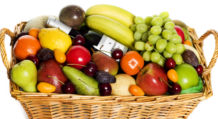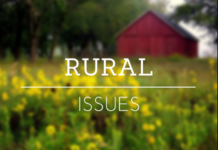|
This fall millions of Americans will make an annual pilgrimage to a retail outlet to purchase a vegetable that, unfortunately, they are very unlikely to eat, said University of Missouri Extension horticulturist David Trinklein.
While many people throughout the world use pumpkin as a staple in their diet, in the United States this colorful member of the gourd plant family is used primarily for decoration.
Pumpkins have been cultivated since about 3500 B.C., rivaling maize (corn) as one of the oldest known crops in the Western Hemisphere. Archaeological evidence suggests that pumpkins and winter squash are native to the Americas, from the southwestern part of what is now the United States through Mexico and Central America and south into Peru, Ecuador and Colombia, said Trinklein.
Presumably, American colonists relied heavily on pumpkin as a food source, as evidenced by this poem from about 1630:
For pottage and puddings and custard and pies,
Our pumpkins and parsnips are common supplies:
We have pumpkins at morning and pumpkins at noon,
If it were not for pumpkins, we should be undoon.
One way colonists are thought to have prepared pumpkins was to slice off the tops, remove the seeds and refill the inside with a mixture of milk, spices and honey. The resultant concoction was baked in hot ashes and is said to be the origin of our modern pumpkin pie.
Pumpkins come in many different colors in addition to orange, and they are found in a variety of shapes and sizes. Plant breeders have concentrated on improving the ornamental appeal of pumpkin rather than its “table quality,” Trinklein said. Modern pumpkin varieties mature into a deep orange color much earlier than the pumpkins of years past. Plus, most of today’s varieties have a large, dark green stem or “handle” for consumer convenience.
A relatively new development are pumpkins whose rinds are covered with warts. The latter tend to make jack-o’-lanterns look even more ghoulish.
When selecting a pumpkin for fall decoration, make sure it is free from blemishes and fully mature. The latter can be judged using the “thumbnail test.” If you can pierce the rind of a pumpkin with your thumbnail, the pumpkin was picked too early and will not store well.
As a food source, pumpkin is quite nutritious with many health benefits. It is very high in beta carotene (vitamin A) and is a good source of dietary fiber. The spices commonly used to prepare pumpkin pie have health benefits of their own. Not many people could tolerate taking allspice directly to benefit from its antioxidant, anti-inflammatory and stomach-calming properties. However, consumed in a piece of pumpkin pie, it tastes rather delightful, said Trinklein.




